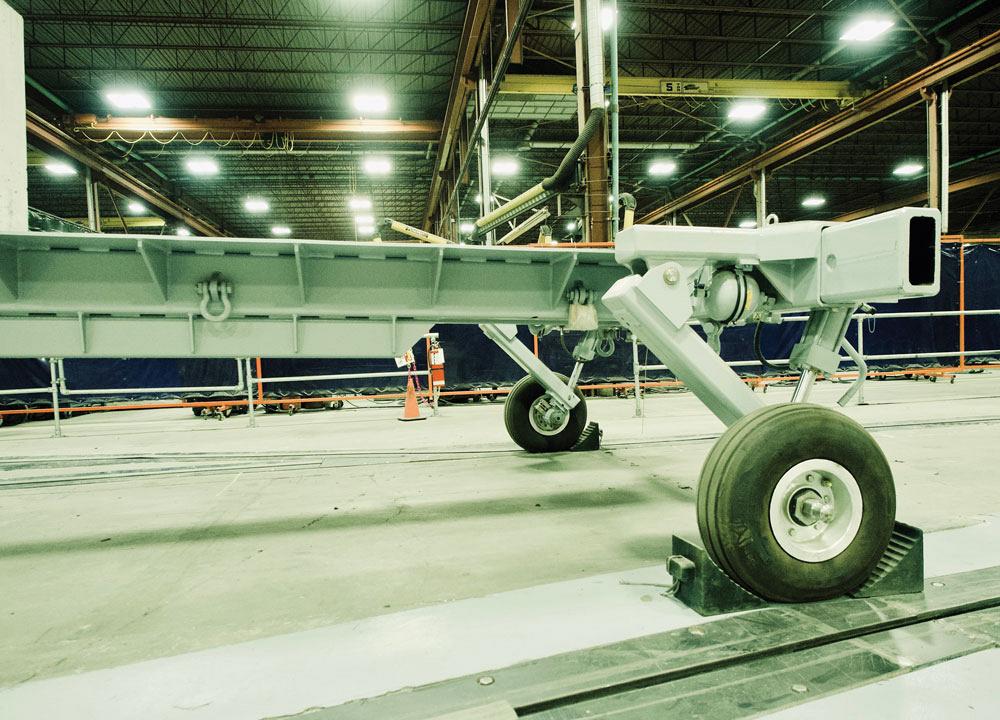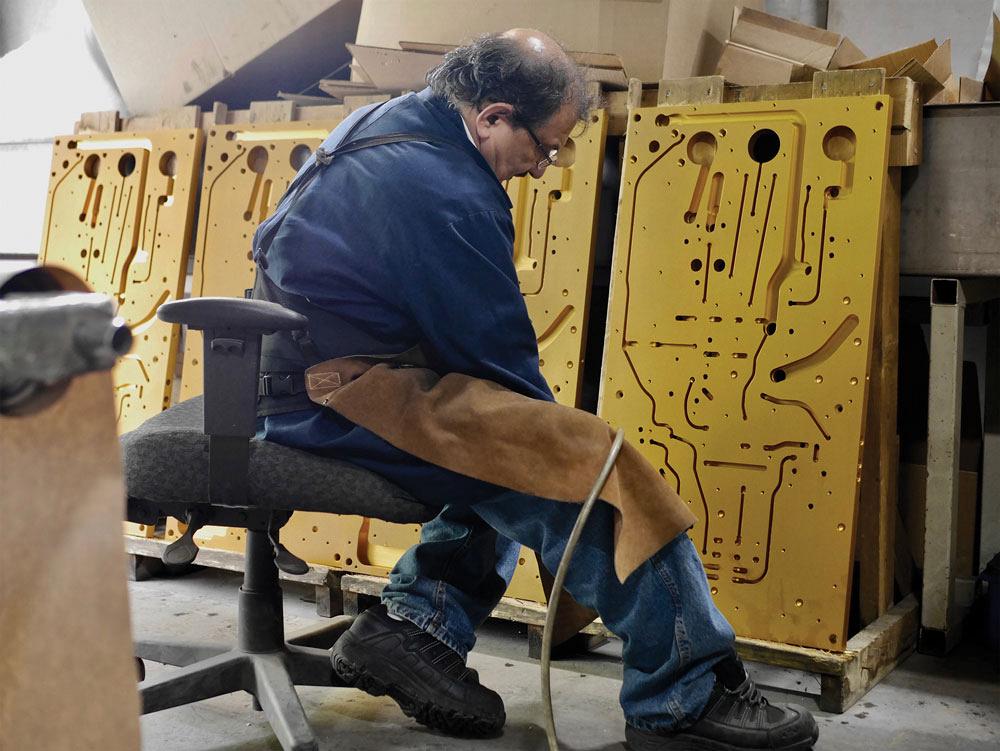Contributing Writer
- FMA
- The Fabricator
- FABTECH
- Canadian Metalworking
Becoming a better supplier
Ingadale Industries focuses on its own supply chain, adds technology to serve its customers better
- By Brian Rogers
- September 27, 2018
- Article
- Management

The Dead Load Test Vehicle is designed to simulate helicopter undergoing several manoeuvres under the control of the ASIST aircraft handling system.
Author Michael Porter once said that supply chain management strategy defines the connection and combination of activities and functions throughout the value chain to fulfill the business value proposal to customers in the marketplace.
Essentially he argued that the most important elements of supply chain management relate to timing and cost.
Ingadale Industries, Scarborough, Ont., began to move toward better control of these elements at a time when procurement was just beginning to evolve into supply chain management.
Ingadale is a precision machine shop capable of machining to tolerances of 0.001 inch or less, but it also offers other services including welding, assembly, passivation, and painting. Founded 51 years ago by Bill Mosgol and Rudy Hoevelmann, the company now employs about 80 people.
Digging into the books
A few decades into Ingadale’s history, the shop began to get jobs that were more complex, such as defense contracting work from Canadian Marconi. Hoevelmann began examining invoices, looking for ways to cut costs to be more competitive. While doing so, he also found that work sent out for painting and passivating was incurring additional costs as well as time.
It meant that jobs requiring these services took some weeks, whereas if they were done in-house, the work could be completed in a couple of days. Some parts for orders had to be welded, so Hoevelmann sought certifications for steel and aluminum welding rather than sending the work out to be done.
As more services began to be provided in-house, Ingadale was reducing the time from order to delivery. It also was reducing costs, allowing the company to be more competitive in quoting jobs.
That’s when Ingadale added painting and passivating to its list of services. A benefit of this change was reducing downtime in the painting, passivating, and chemical film treatment areas of the shop.
Savings lead to more machines
As Ingadale began to get more complex defense-sector work, such as antennas and military boxes, the company had to focus once again on managing its role in its customers supply chains.
One of those customers is Indal Technologies, a supplier of engineered systems and products for advanced naval, marine, and aerospace applications. The Mississauga, Ont., company, a division of Curtiss-Wright Defense Solutions, is one of Ingadale’s biggest customers and has been for some time. Indal has approximately 500 suppliers—a large number for a manufacturing facility of its size—because of the amount of custom work it does.
Ingadale would work on parts for Indal and send them back, after which Indal would send the parts to other suppliers for more work, and then the parts would be returned to Ingadale again. It was to both Indal’s and Ingadale’s advantage to cut down on this back-and-forth process, so the manufacturer added four new CNC machines capable of operations that previously would have had to be sent to another shop to complete.
Ingadale has multiple sources for its basic raw materials, and the steel, aluminum, and almost all other materials are procured domestically. Some services such as plating and heat treating, however, were not practical to bring in-house because they are very specialized, so they were outsourced to a handful of highly skilled providers.
Controlling raw material supplies, CNC machine capacity, and limiting outsourcing all led Ingadale to have better control of its entire supply chain and opened up new opportunities.
One good example of the diversity of work Ingadale can now perform is the Dead Load Test Vehicle (DLTV) made for Indal, which simulates a helicopter undergoing several manoeuvres under the control of the ASIST aircraft handling system. This entire system was completed by Ingadale in-house, with the exception of the hydraulic components and the military-specified tires (the same tires used by the helicopters).
“We didn’t think of what we were doing as supply chain management, and we didn’t get there by formulating a policy. We did it by looking at separate elements of improving quality, cutting costs, and reducing time to completion,” said Ingadale General Manager Greg Holdsworth.
The human aspect
One aspect of the supply chain not often considered is the human element, yet lack of skilled workers is probably the greatest vulnerability for any precision machine shop.
Most of Ingadale’s workforce is highly skilled, and more than half have been with the organization for more than 25 years. Recruitment has been mainly performed by word of mouth to date, but a succession plan has been formulated for the most senior positions, and a more organized approach to recruitment is in the works.
Contributing writer Brian Rogers can be reached at brian.rogers@sypatico.ca.
Indal Technologies, www.curtisswrightds.com
Ingadale Industries, www.ingadale.com
About the Author
subscribe now


Keep up to date with the latest news, events, and technology for all things metal from our pair of monthly magazines written specifically for Canadian manufacturers!
Start Your Free Subscription- Industry Events
MME Winnipeg
- April 30, 2024
- Winnipeg, ON Canada
CTMA Economic Uncertainty: Helping You Navigate Windsor Seminar
- April 30, 2024
- Windsor, ON Canada
CTMA Economic Uncertainty: Helping You Navigate Kitchener Seminar
- May 2, 2024
- Kitchener, ON Canada
Automate 2024
- May 6 - 9, 2024
- Chicago, IL
ANCA Open House
- May 7 - 8, 2024
- Wixom, MI






















